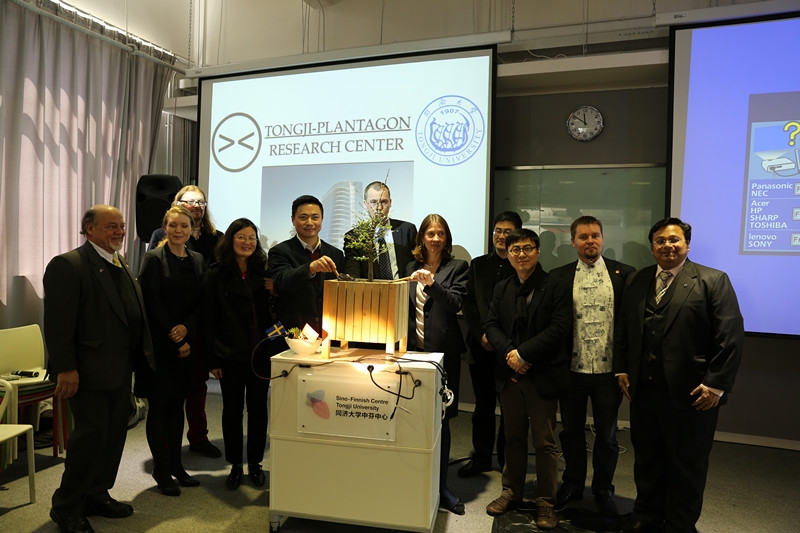On April 3rd, Tongji-Plantagon Research Centre held its opening ceremony at Sino-Finnish Centre, Tongji University. Deputy Secretary of the Party Committee of Tongji University, Li Xin, Vice Dean of College of Design & Innovation, Lou Yongqi, Deputy Director of International Office, Feng Yiping, Plantagon COO, Owe Peterson and Swedish Consul General, Victoria Lee, attended the ceremony.
Deputy Secretary of the Party Committee, Li Xin said that Tongji University is very happy to see this cooperation with Plantagon, a global innovation leader in facility agriculture and design, which would promote the Innovation Campus development. He also welcomed Plantagon to settle at Tongji Entrepreneurship Valley, which was going to be set up soon this year.
In her speech, Swedish Consul General, Victoria Lee, spoke highly of the cooperation based on research and innovation between Chinese University and Swedish companies.
Plantagon COO, Owe Peterson, utilized a lively VCR to demonstrate Plantagon’s core philosophy. He pointed out that such cooperation with Tongji University would enormously encourage and support Plantagon to go further in research and innovation, as well as converting Tongji’s cutting-edge research achievements to reality that would benefit human being.
Finally, representatives from both sides planted a tree carrying the hope of a better future, and announced the establishment of the Tongji-Plantagon Urban Agriculture Design & Innovation Lab located in Tongji-Aalto Design Factory.
This Tongji-Plantagon Research Centre will conduct studies over the next three years to determine ideal crop mixtures, green house building prototypes, urban planning, investment needs and business development.
Plantagon International is active in the sector urban agriculture and is a global innovation leader in vertical farming. Plantagon’s vertical greenhouse minimizes the need for energy, water and pesticides. The negative environmental impact of the greenhouses is very low, and since the products are delivered directly to consumers in the city, the transportation costs are also minimized.
